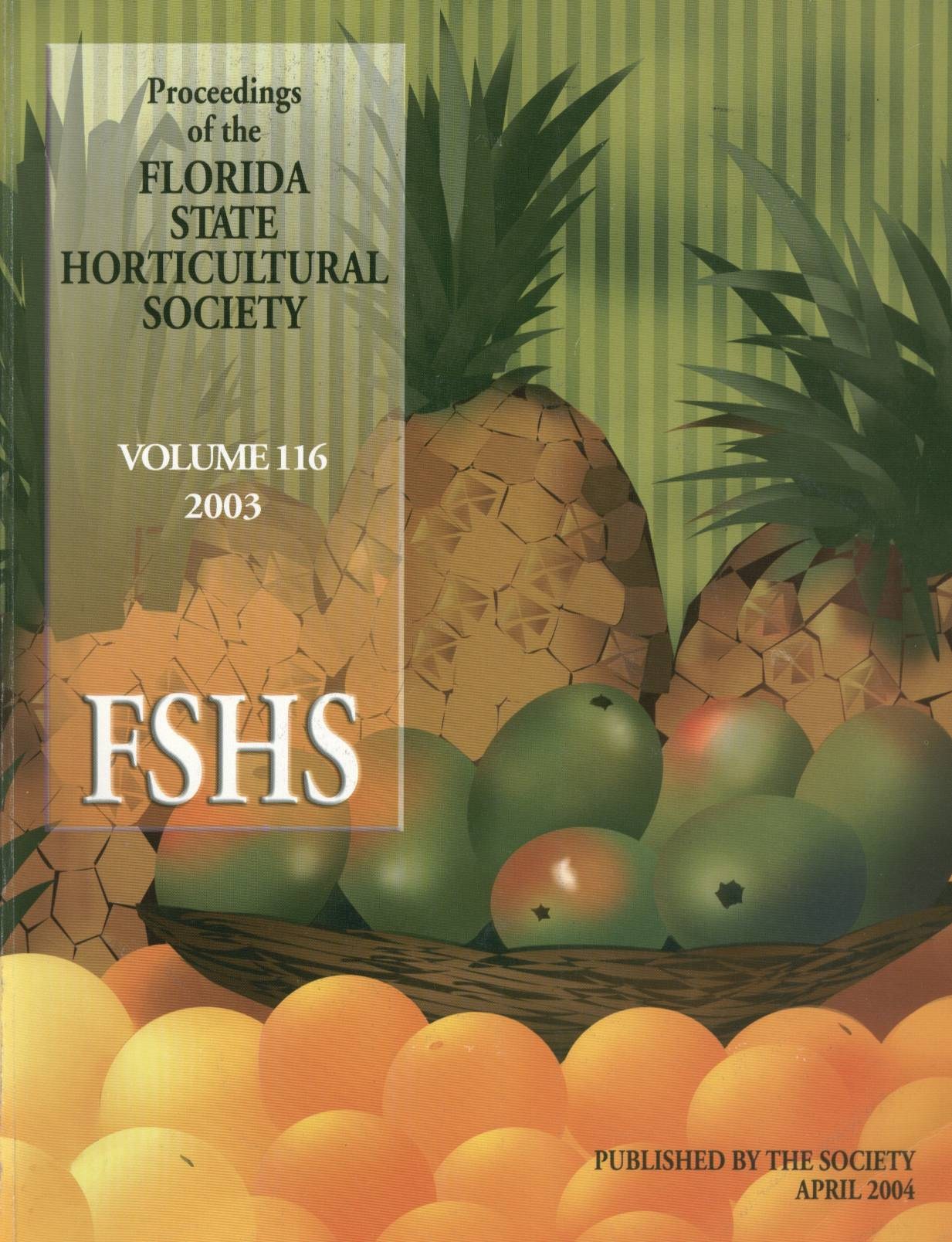Abstract
In an effort to develop an alternative to methyl bromide- dependant strawberry (Fragaria × ananassa Duch.) field production in north-central Florida, we evaluated various soilless substrates, growing containers, plug transplants, plant densities, cultivars, and biological control strategies in a passively ventilated high-roof greenhouse near Gainesville, Florida. The type of soilless media used influenced total yield of field-grown and greenhouse-grown plugs when plants were grown in Polygal® troughs or poly-bags placed at ground level, but did not influence total yield when plants were grown in poly-bags placed on elevated gutter sections. Type of growing container did not affect the yield of greenhouse-grown plugs, however, early yield of field-grown plugs was higher when grown in poly-bags placed on elevated gutter sections than when grown in the other types of containers. Twelve plant densities ranging from 0.86 to 2.55 per ft (37,462 to 111,078 per acre) were evaluated. Plant densities were derived by combinations of six between-row spacings (16, 18, 20, 22, 24, and 26 inches center-center) and two within-row spacings (7 and 12 inches plant-to-plant). In Fall 2001, the yield per ft increased linearly with plant density. However, in Fall 2002, the yield per ft did not increase linearly due to a reduction in yield per plant at the between-row spacing of 16 inches. Strawberry yields of 1.96 lb/ft (7,115 12-lb flats per acre) were obtained from greenhouse production compared to a 10-year average yield of 2,392 12-lb flats per acre (FDACS, 2002) for field production. New cultivars such as FL97-39 and Carmine produced high early yields, but FL97-39 was highly susceptible to powdery mildew (Sphaerotheca macularis), and 'Carmine' and 'Sweet Charlie' were more affected by aphids than other cultivars. Aphidius Colemani and Lysiphlebus testaceipes parasitic wasps, and Neoseiulus californicus predatory mites were effective in controlling aphids (Aphis gossypii) and two-spotted spider mites (Tetranichus urticae) respectively. Thus, protected strawberry culture can enhance early and total yields, improve harvest efficiency, improve fruit quality by reducing pesticide usage, and eliminate dependency on methyl bromide.

